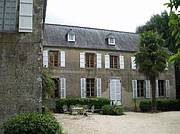San Gimignano was quaint, and the Tuscan countryside stunning.
Maybe one day I'll go back to basque in the sun and soak up la bella vita.
This is the story of our house and farm. Jordan and I designed the house, and Jordan (with the help of family and friends) is building it. It's a "green" house, which means that, wherever possible, the materials we use are natural, local and safe for the environment. Once the house is complete, we will keep you updated on the progress of the farm. We hope you enjoy watching our house, farm and family grow!

